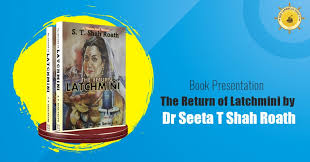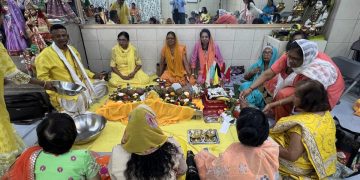Review of Novel:
The Return of Latchmini – of a Guyanese/Surinamese indentured laborer’s Experience
Written by Dr S. T. Shah Roath of University of Guyana, the novel The Return of Latchmini,was reviewed by thousands of young writers hoping to publish their first novel. Though nit characterized in the category of a youngster. Novelists’ hopefuls shared their admiration for the author’s skill at creating a narrative around facts and making the resulting creation an artistic masterpiece. One writer said that Dr Shah Roath, “Managed to get her characters in a way that makes them go off in different directions for the victory that is snatched from their hands. Resolution comes at such great costs!” While another noted, “Poor Latchimini … her story sounds so real. It’s like the writer holds the reader’s hand and they walk together between the characters, watching them very near and close-up. Well-done!”
A student at a university of in Bihar, India, says that he never knew much about indentureship of Indians in the West Indies, and all the books he found were too scholarly and burdensome to read and comprehend, but the novel, The Return of Latchmini, brought the subject to life and allowed him to appreciate and understand the process of recruitment, reasons for their departure from India, the arduous journey, and their life and resilience on the sugar plantations, all understood in an enjoyable way. He expressed the wish to someday go to Guyana and see the places described in the novel.
Unlike previous writings on the subject surrounding the departure from India, Shah Roath shows the real reason for Latchmini’s, and her husband’s original departure was finding work abroad when none was available at home, earning enough money to return and build a comfortable life in her home village in Allahabad, after a bound contract in 1894 Suriname – Sri Ram’s land.
 The author, Seeta Shah Roath, takes facts surrounding the living history of Guyana and weaves a story of intrigue, mystery, and adventure surrounding a family split up in Suriname and British Guiana, thrice journeying across three oceans, and bringing forthnew life aboard the ship – The Avon. Although the journey of the Indian immigrant has been told and retold so many times before, seeing the actual experiences through the eyes of protagonist Latchmini, her son Mohabir, and the ever patient Naraine, brings a static history to life in the novel. Latchmini returns to her village in India with her two children, pregnant with another child and faces a different reality from when she had left as a bride with her husband ten years before. She had hoped to have her fourth child born in her homeland, but as it turns out that was not to happen. The happy reunion with her in laws was not as imagined and she soon escaped the family home with her children in the dead of night, boarded a train and headed back to Calcutta and what she had hoped would be a return journey to Suriname.
The author, Seeta Shah Roath, takes facts surrounding the living history of Guyana and weaves a story of intrigue, mystery, and adventure surrounding a family split up in Suriname and British Guiana, thrice journeying across three oceans, and bringing forthnew life aboard the ship – The Avon. Although the journey of the Indian immigrant has been told and retold so many times before, seeing the actual experiences through the eyes of protagonist Latchmini, her son Mohabir, and the ever patient Naraine, brings a static history to life in the novel. Latchmini returns to her village in India with her two children, pregnant with another child and faces a different reality from when she had left as a bride with her husband ten years before. She had hoped to have her fourth child born in her homeland, but as it turns out that was not to happen. The happy reunion with her in laws was not as imagined and she soon escaped the family home with her children in the dead of night, boarded a train and headed back to Calcutta and what she had hoped would be a return journey to Suriname.
Journeying out of India for a second time, Latchmini watches men jump overboard in fear of the sea, sees dead babies being thrown overboard weeks after, comforts women raped in the water-closet on the ship, and barely avoids the same fate. She gives birth to baby Jack delivered by ‘Captain Jack’ in the middle of a violent storm just after passing the island of St. Helena, and before landing in Demerara instead of Sri Ram’s land where she had thought she was heading.

The natural beauty of Guyana is weaved through adventures of the family as never before told realities is dramatised in heightened, breathtaking episodes of some of the evils and triumphs of plantation life and heart breaking scenes of loss and gains.
The novel brings to focus the Suriname-British Guiana connection of the time while leaving the reader anxiously awaiting the sequel. About the book, the author writes: Would the tides of misfortune sweep Latchmini into the depts of despair? Or will she ride its crest to triumph? Another significant feature of the book is that the cover art is a painting that is part of Guyana’s National Collection at Castellani House by another UG lecturer and artist, Philbert Gajadhar.
It is a wonderful book, well written, great prose. It should be in the reading list for literature and English courses as well as on indentureship. It makes for a great read for all.









































































